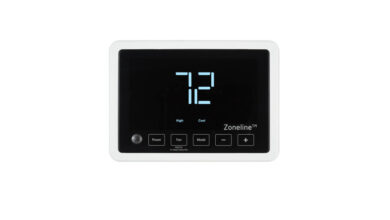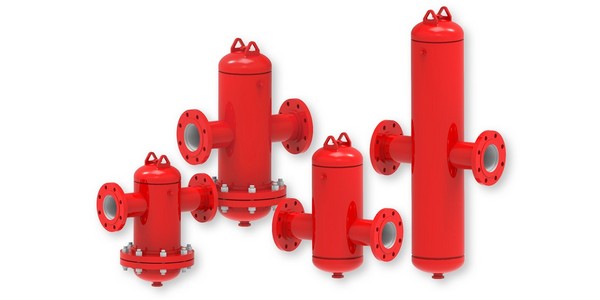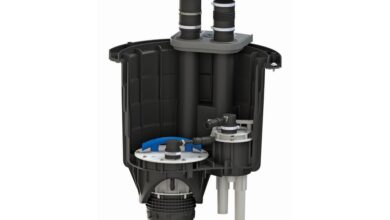Impact of Commissioning on ASHRAE Standard 241 – Control of Infectious Aerosols
By Wade H. Conlan
Does the commissioning authority have a part to play when it comes to implementing ASHRAE Standard
241: Control of Infectious Aerosols in new and existing facilities? Yes. In fact, there are several different
services that would need to be provided for an existing facility, including testing, adjusting and
balancing; building automation and more. Professionals providing these services will majorly affect how
facility owners implement ASHRAE Standard 241.
To understand impact, there must be a mutual understanding on the purpose and scope of ASHRAE
Standard 241. The standard states the required amount of equivalent clean air if a facility is operating in
infection risk management mode, which is what facilities were doing during the COVID-19 pandemic. It
also details air cleaners’ efficiency and effectiveness, the impact of air distribution, the assessment of
the HVAC system’s ability to provide equivalent clean air in IRMM, and planning and implementing
engineering controls to get the systems into compliance.
Finally, it covers the system operation and maintenance requirements during IRMM. There are a few
critical items for this standard; it only addresses long-range transmission. The target volume of
equivalent clean air is based on achieving a low-risk level of infection for the occupant during IRMM, the
systems are assumed to be operating in accordance with the local ventilation code (e.g., ASHRAE
Standard 62.1), occupancy levels are allowed to be different in IRMM than normal mode, and it is
technology agnostic for engineering controls.
For new construction or major renovations, the impact for the commissioning provider is simple.
Perform the same commissioning tasks already required by the project, but include IRMM in that
process. Design reviews must evaluate the requirements for the systems and equipment to verify that
those requirements are clearly stated for operation in IRMM versus normal mode.
Recently, projects have included multiple control diagrams for systems that have different operating
parameters for IRMM versus normal mode. This could include raising the minimums on terminal units to
increase the recirculation air to the space that, when filtered, provides VECAi to the space. Or adjusting
the carbon dioxide demand-controlled ventilation sequences to decrease the CO2 upper limit allowed,
resulting in an outside air quantity closer to the design cubic feet per minute, which contributes to
VECAi. The real impact is during the functional performance testing, when the systems must be tested in
IRMM in addition to the typical occupied, unoccupied, warm-up, cool-down, or emergency
preparedness modes. Finally, the CxA will need to create a building readiness plan for IRMM. Think of
this BRP as an additional section of the project’s required systems manual.
An existing building assessment, planning and implementation, as required in Standard 241, must be
provided by someone with existing building commissioning that is geared toward tactical retro-
commissioning, with the support of trusted TAB technicians. The steps are similar to that process:
• Gather data
• Site observations to review
o Inventory occupied spaces
• Equipment evaluation
o Ventilation
o Airflow measurement
o Outdoor airflow rates
o Ventilation system controls
o Filtration
o Exhaust
o Air cleaners
o Controlling sensors
o Control sequences of operation
• Existing engineering controls
Once there is an understanding of those items, the evaluation can begin on the systems using the
equivalent clean air calculator or assessment building readiness worksheet, which are practical
documents provided with the purchase of the standard, to evaluate the quantity of VECAi provided to
the spaces. The tools provide the simple answer: VECAi,target – VECAi,existing = VECAi,differential
(Equation 8-1 in Standard 241). Simply put, if the answer is less than zero, the system passes, and the
process stops here for that space or system. However, if the answer is greater than zero, the CxA must
plan engineering controls for contractors to implement so the system is able to operate in IRMM.
The standard does not identify which engineering controls to use, but addresses how to verify the VECAi
airflow that they provide, if not already certified by a method of testing, such as ASHRAE Standard 185.3
or from an organization like the Association of Home Appliance Manufacturers. If the device does not
have a rating per these methods, there is a process to determine the device’s equivalent clean airflow,
but if one does not exist, there is a path in Normative Appendix A.
Once the engineering controls are planned, the next step is to implement them in the systems. Part of
that process requires the commissioning of the new systems and any updated control strategies to
verify they are working properly via functional performance testing. The final step for existing buildings
is the creation of the BRP, which is hopefully an update to that facilities’ systems manual.
Regardless of whether the project is new or existing, commissioning providers will have an enormous
impact on the successful implementation of ASHRAE Standard 241 for any facility.
Editor’s Note: This topic was discussed at CxEnergy Conference & Expo. Save the date for CxEnergy 2025,
to be held April 28-May 1 in Charlotte, North Carolina.
Wade H. Conlan, P.E., CxA, BCxP, LEED AP BD+C, is an assistant vice president and commissioning and
energy discipline manager at Hanson Professional Services. He is a voting member of SSPC 241, which
developed and is maintaining ASHRAE Standard 241.




